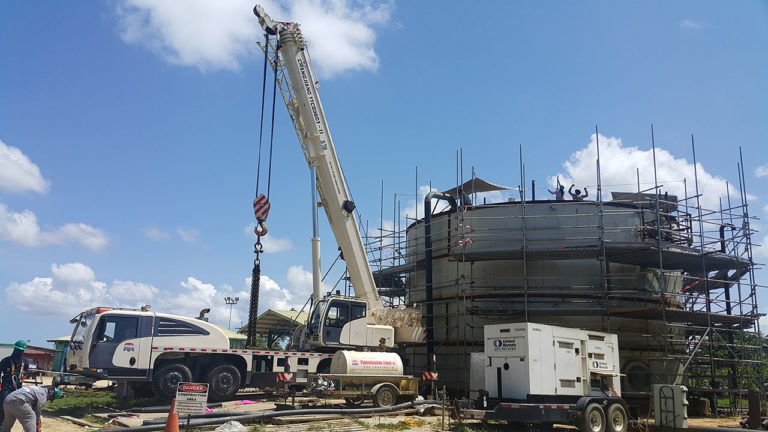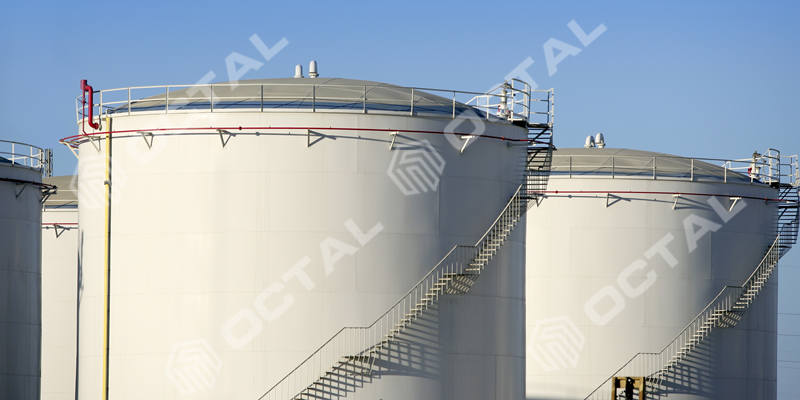Comprehending the Importance of Welding Examination in Quality Guarantee Processes
Welding evaluation is a crucial component of quality guarantee in building and construction and production. It assures that welds abide by well established requirements, which is critical for structural stability. Various assessment methods, from visual to ultrasonic testing, help determine flaws early. This positive strategy not just stops expensive repair services however also boosts security. Understanding the subtleties of welding examination can disclose its more comprehensive effects for industry conformity and reputation. API 650 Welding Inspection. What lies underneath the surface area of these methods?
The Duty of Welding Inspection in Quality Control
While welding is an essential procedure in various sectors, its top quality and honesty hinge considerably on reliable examination methods. Welding evaluation acts as a protect, making certain that welds satisfy established requirements and requirements. This procedure not only determines issues but also analyzes the total handiwork, thereby adding to the safety and durability of bonded structures. Assessments are important to quality control, as they aid keep and prevent expensive failures conformity with industry guidelines. By employing experienced inspectors, companies can boost their operational performance and support their credibilities. Furthermore, the insights gained from assessments can inform constant renovation, bring about better approaches and training for welders. Eventually, welding inspection serves as a vital link in the top quality guarantee chain, guaranteeing that every joint is dependable and qualified of holding up against the rigors of its intended application. This diligence is important for the stability of infrastructure and the safety and security of end individuals.
Types of Welding Inspections
Welding inspections include a range of approaches developed to review the top quality and honesty of welds. These inspections are vital in making sure compliance with sector requirements and specifications. Typical sorts of welding inspections consist of aesthetic assessment, which enables immediate identification of surface abnormalities; ultrasonic testing, which utilizes high-frequency sound waves to discover inner imperfections; and radiographic testing, utilizing X-rays or gamma rays to disclose weld integrity beneath the surface (API 650 Welding Inspection). In addition, magnetic fragment testing is made use of to determine surface area and near-surface gaps in ferromagnetic products, while color penetrant screening supplies a method for disclosing surface-breaking issues. Each type of evaluation offers a certain purpose, adding to the total high quality guarantee procedure. By employing a combination of these strategies, inspectors can give a detailed assessment of welding quality, ultimately ensuring the safety and security and integrity of welded frameworks
Typical Problems Detected in Welding
A selection of typical defects can happen during the welding process, impacting the stability and performance of bonded structures. These defects include porosity, which entails caught gas pockets within the weld, weakening its stamina. Cracks might likewise create because of rapid air conditioning or inappropriate joint layout, causing prospective failure under stress. Insufficient combination takes place when there is not enough melting of the base metal, resulting in weak bonds. Another defect, damaging, entails the removal of base metal along the weld side, creating a significant architectural weak point. Furthermore, extreme spatter can affect the look and require additional cleaning or repair work. Misalignment can lead to unequal weld beads, endangering the overall high quality. Determining these flaws early via proper evaluation techniques is important to ensure the integrity and security of welded elements, inevitably securing the efficiency of the whole structure.

Benefits of Routine Welding Examinations
Routine evaluations play a significant duty in keeping the high quality and safety of bonded frameworks, especially because of the usual issues formerly described. These inspections give a possibility to recognize and remedy issues before they intensify right into severe problems, making sure structural honesty. By identifying flaws early, organizations can decrease repair work prices and stay clear of possible project delays.
In addition, normal welding assessments enhance compliance with market requirements and laws, promoting depend on amongst stakeholders. This adherence not only shields the company's track record yet additionally adds to enhanced security for employees and the general public.
Moreover, regular assessments assist in far better training important site and skill growth for welders, as responses from inspections can direct renovations. Inevitably, the advantages of regular welding assessments prolong past instant quality control, promoting long-term operational effectiveness and dependability in welded structures.
Finest Practices for Effective Welding Examination
Implementing finest practices in welding examination is necessary for guaranteeing the highest possible requirements of quality and safety and security. First, assessors should be sufficiently trained and accredited, having a complete understanding of welding techniques and products. Using innovative inspection innovations, such as ultrasonic screening and radiography, boosts the detection of flaws that may not show up to the naked eye. Establishing a clear examination strategy, detailing the requirements and regularity of examinations, guarantees uniformity and thoroughness.

Recording all searchings for carefully is vital for traceability and responsibility. Routine calibration of examination equipment ensures precision, while keeping a tidy and organized workspace minimizes the risk of contamination. Additionally, fostering open communication among group participants assists in the sharing of understandings and advertises a culture of top quality. By sticking to these ideal methods, companies can significantly enhance their welding quality control procedures, ultimately causing safer and a lot more reliable items.

Frequently Asked Questions
What Qualifications Are Needed for a Welding Examiner?
A welding examiner generally needs accreditation from identified organizations, such as the American Welding Culture (AWS) or the International Institute of Welding (IIW), along with relevant experience and expertise in welding processes and high quality criteria.
Exactly How Commonly Should Welding Inspections Be Carried Out?
Welding inspections ought to be performed consistently, generally at different project phases, consisting of prior to, throughout, and after welding procedures - API 650 Welding Inspection. The frequency frequently depends upon job specs, governing requirements, and the complexity of the welds involved
What Are the Prices Related To Welding Assessments?
The expenses connected with welding examinations differ widely, normally varying from a few hundred to numerous thousand dollars, relying on variables like inspection type, task size, and area, influencing total task budget plans and timelines.
Can Welding Inspections Be Conducted Remotely?
Yes, welding inspections can be performed remotely making use of innovative innovations such as drones, video cameras, and ultrasonic testing. These methods permit examiners to assess weld integrity without being literally present, boosting performance and security in different atmospheres.
Exactly How Do Examination Results Impact Job Timelines?
Inspection results can substantially affect project timelines by recognizing defects early, causing necessary rework or changes. Delays might API 650 Welding Inspection occur if evaluations disclose issues calling for resolution, ultimately impacting overall job completion and budget plan adherence.
Welding inspections include an array of methods designed to examine the top quality and stability of welds. Usual kinds of welding assessments consist of visual assessment, which permits for instant recognition of surface area irregularities; ultrasonic testing, which makes use of high-frequency sound waves to identify internal defects; and radiographic screening, employing X-rays or gamma rays to reveal weld stability underneath the surface area. Regular inspections facilitate much better training and skill growth for welders, as feedback from inspections can direct enhancements. Applying ideal practices in welding examination is vital for guaranteeing the highest possible criteria of quality and safety. Welding inspections must be executed routinely, usually at various job phases, consisting of before, during, and after like this welding processes.